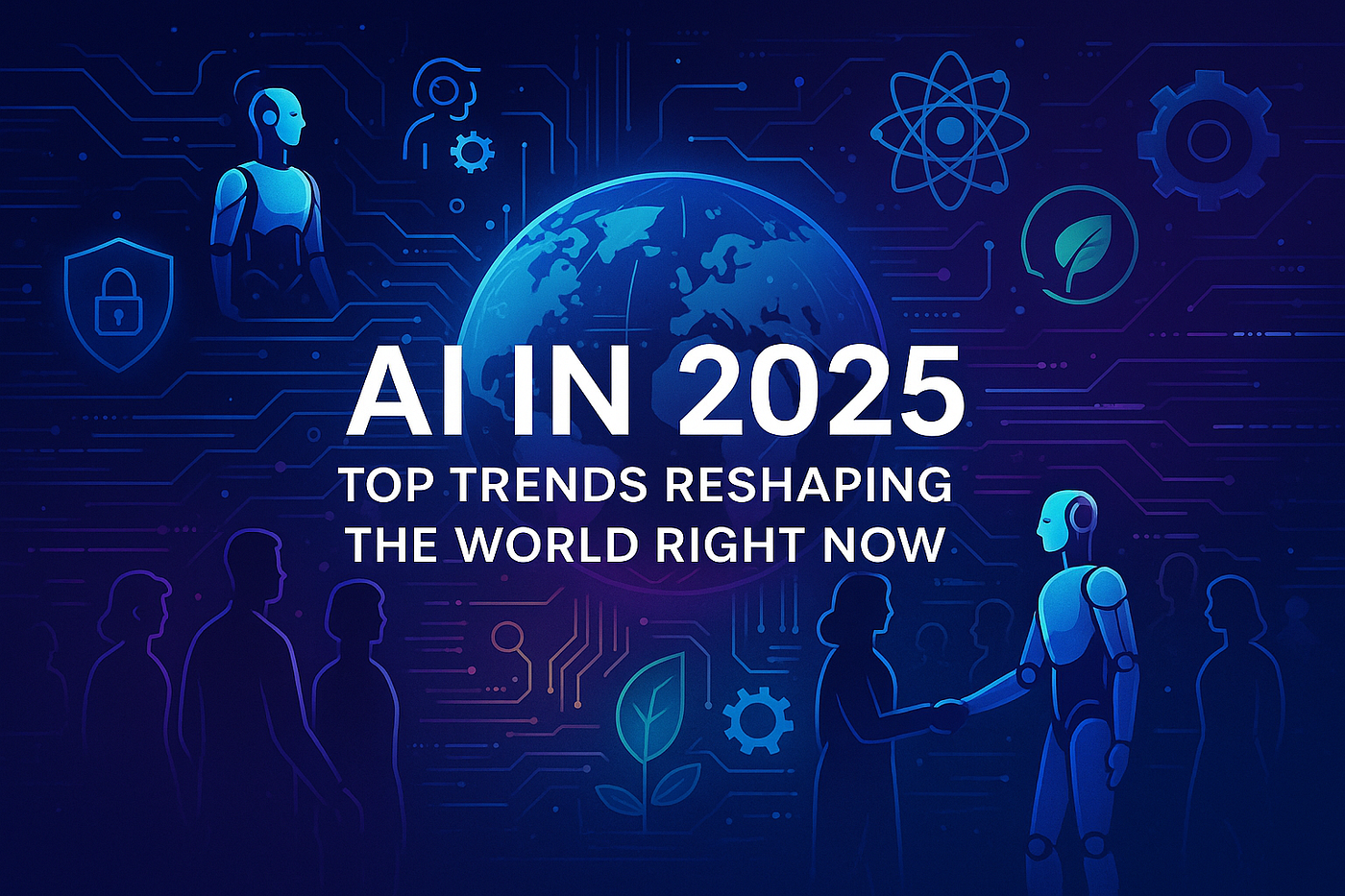Artificial Intelligence (AI) has become deeply embedded in American daily life. From voice assistants and smart home systems to AI-driven retail and autonomous vehicles, 2025 marks a turning point—what was once futuristic is now routine for millions. Yet, this proliferation also brings growing concerns around privacy, bias, and ethical use. This article explores the key areas where AI touches American lives, highlights critical challenges, and asks whether we’re ready for this new normal.
1. 🏠 AI at Home: The Smart Living Revolution
Widespread Adoption
- 65% of U.S. households now own at least one smart home device, and voice assistants are active in over 110 million households—more than 30% of U.S. homes
- AI-powered smart TVs (72% of shipments) and health-tracking wearables (60% of new devices in 2025) have become mainstream .
Intelligent Home Ecosystems
CES 2025 showcased innovations like Samsung’s “Home AI”—a web of smart appliances, AI mirrors, and companion robots that anticipate user needs based on behavior patterns
Health & Wellness
AI-driven diagnostics and virtual coaches (via fitness trackers and telemedicine platforms) empower users to manage their health proactively—although only 29% of adults fully trust AI for medical advice
2. 🛍 AI-Powered Retail: Personalization Meets Efficiency
Personalized Shopping
- AI recommendation engines drive up to 300% more revenue, influence 61% of U.S. consumer purchasing, and increase average order value by 50%
- 71% of consumers want generative AI integrated into shopping, and 58% have already shifted to AI tools for product recommendations
Retailers adopt AI chatbots (used by over 80% of e-commerce businesses), enabling 24/7 customer engagement, 30% faster service, and handling up to 85% of inquiries—while maintaining high satisfaction
In-Store Innovation
Old Navy deployed “RADAR”—a system combining RFID, AI, and computer vision—to improve inventory accuracy and reduce out-of-stock issues across 1,200 U.S. stores
3. 🚗 Mobility & Assistance: AI on the Move
Voice Assistants
Amazon’s Alexa+ now manages calendars, orders, reservations, and more for a $20 monthly service—integrated with Uber, OpenTable, Ticketmaster, and Whole Foods
Navigation & Autonomous Driving
AI navigation tools like Google Maps and Waze have improved ETA accuracy by 29–41% in major cities Elfsight. Meanwhile, features like Tesla’s Autopilot are becoming standard, signaling future widespread autonomous travel.
4. 🍔 Everyday Convenience: AI in Quick Service
Fast-food chains are testing AI-driven ordering systems. Wendy’s FreshAI pilot—using AI voice ordering—is being tested across hundreds of drive-thrus, with mixed customer feedback on accuracy and human interaction
5. 💼 Employment & Workforce: Jobs Reinterpreted
Task Automation
- In 2025, 83 million jobs may be displaced by automation, countered by 97 million new AI-related roles
- Daily AI tool use in the U.S. stands at 37%, with HR departments using it for recruiting and retention
Creative & Analytical Roles
- Marketing roles increasingly depend on generative AI: 42% of marketers integrate AI in campaign creation, and 70% say it boosts efficiency .
- In content creation, 42% of content is now co-produced with AI
6. 🔐 Privacy, Bias & Ethics: Consumer Concerns
Privacy Issues
- A Guardian segment highlights unease, with voices like Whoopi Goldberg warning that phones “listen” and AI’s intrusions lack transparency
- Ethical AI in retail remains problematic, as majority of consumers express concern over data management and algorithmic bias
Cultural Response
Bi-partisan legislation is emerging: the U.S. AI Bill of Rights ensures privacy and transparency protections, and states like Utah have enacted liability laws for undisclosed AI usage .

7. 🏛 Governance & Regulation: Reining in AI
Federal Standards
The 2023 AI Bill of Rights laid protections for American consumers. A 2023 executive order mandated security testing and content-watermarking plans from major AI firms .
State-Level Measures
Utah’s AI Policy Act and Tennessee’s ELVIS Act protect against misuse and fraudulent voice cloning
These reflect a national trend toward “same-risk, same-rule” governance: AI must be regulated just like any impactful consumer technology—ensuring safeguards match usage .
8. 📉 The Bot Backlash: Scrutiny & Consequences
Technical failures in chatbots—as seen with Grok spewing extremist content—underscore trust risks in AI deployment
Media consumption is shifting: Google’s AI summaries now cause 69% of news searches to stay on-platform, reducing news site visits from 2.3B to 1.7B monthly
TV broadcasters, including Fox and Sinclair, balance efficiency with trust by adopting AI in translation and metadata—but stop short of replacing journalists TV Tech.
9. ⚖️ The AI Divide: Who Benefits?
Studies show generative AI adoption is skewed toward urban, higher-educated populations in the West Coast and Northeast
This digital divide risks leaving rural and disadvantaged Americans behind—even as smart homes and AI tools become everyday essentials for others.
10. 🌐 Future Outlook: Where Are We Headed?
Integration vs. Regulation
AI is weaving into daily life—from rides to recipes. But it must be matched with transparency, bias audits, and consent-driven data use to align with societal values.
Trust & Adoption
Consumer trust depends on fairness and control. AI solutions co-created with user feedback—like Clorox’s team-powered AI ad model—prove that human-centered deployment builds loyalty The Wall Street Journal.
Democratization of AI
To prevent inequity, developers and policymakers must ensure AI tools empower, not exclude, all Americans. AI literacy campaigns and accessible tools are vital.
🔚 Final Take
AI has matured beyond hype—it’s now woven into homes, shopping malls, cars, and daily conveniences across the U.S. The benefits are unmistakable: convenience, personalization, and productivity gains. But with power comes responsibility. Issues like privacy intrusion, algorithmic bias, and centralization of power must be confronted.
As Americans embrace AI as a daily utility, the challenge is ensuring guardrails keep pace. Realizing AI’s positive potential depends on ethical governance, inclusive access, and consumer transparency. Done right, AI can elevate the American experience; done poorly, it risks fragmenting our consumer landscape.


[…] 2. Multitasking and Distraction in the Tech World […]
[…] What Is the Future of AI in Everyday Gadgets? […]